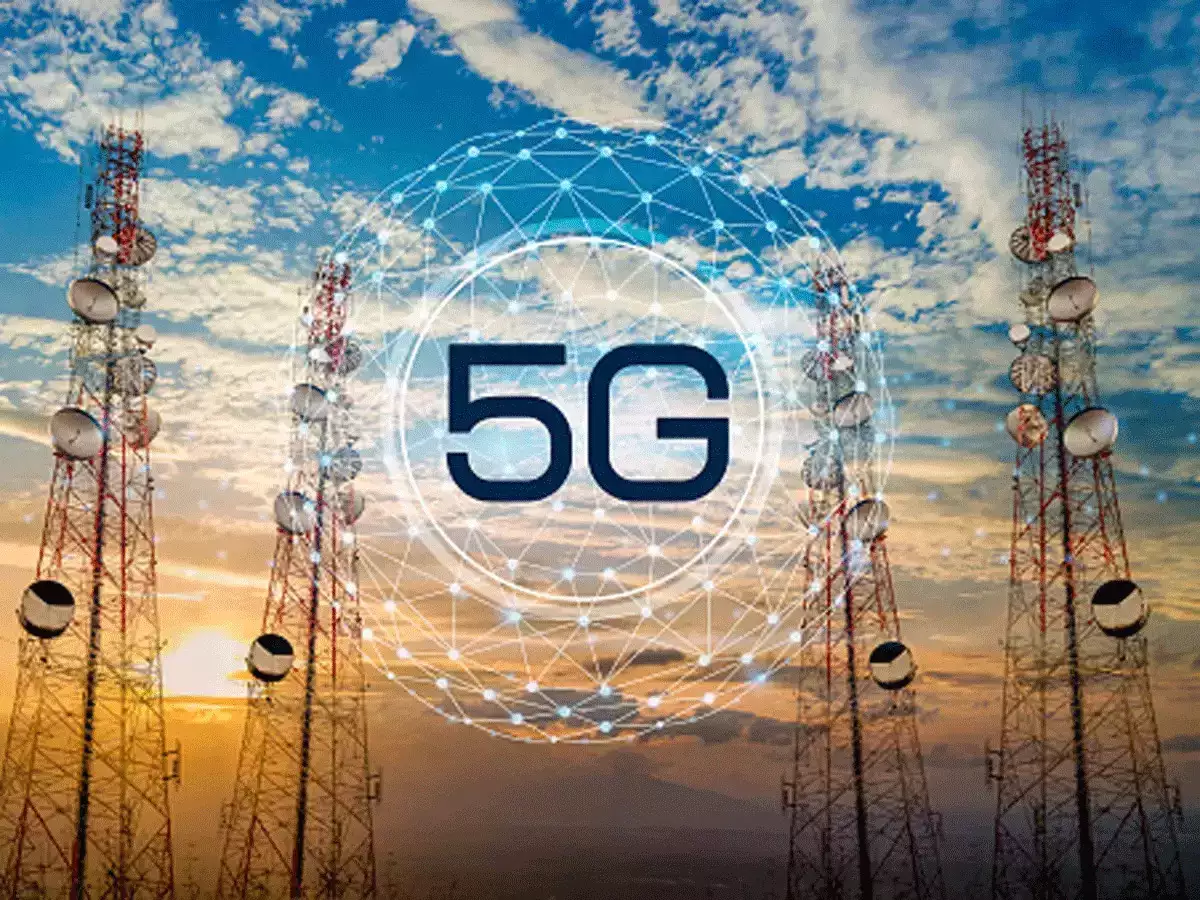The long-awaited rollout of 5G in India is finally here, and it’s set to bring a technological revolution unlike any before. Offering unprecedented speeds, ultra-low latency, and enhanced connectivity, 5G will significantly impact both consumers and businesses. This article delves into the details of 5G technology, the benefits it offers, and the challenges India faces in fully embracing the potential of 5G.
What is 5G Technology? 5G, the fifth generation of mobile network technology, offers a massive leap forward in terms of data speed and bandwidth. While 4G offered speeds of up to 100 Mbps, 5G promises speeds upwards of 1 Gbps and beyond. Moreover, 5G reduces latency to as low as 1 millisecond, enabling real-time data transfer without delays.
In India, telecom giants like Reliance Jio, Airtel, and Vodafone Idea are leading the charge in deploying 5G networks. The government has also auctioned off 5G spectrum licenses, setting the stage for a nationwide rollout.
Benefits for Consumers: The most obvious benefit for Indian consumers will be blazing-fast internet speeds. 5G will enable users to stream high-definition content, download large files, and play graphic-intensive games without lag. For example, streaming 4K or even 8K videos will become seamless, enhancing the overall user experience.
Moreover, 5G will support more devices connected to the network, meaning smart homes and IoT (Internet of Things) devices will function more efficiently. With ultra-low latency, users can experience real-time interactions in applications like cloud gaming, AR/VR, and telemedicine.
For students and professionals, 5G will facilitate faster data transfer and cloud computing, making remote work and online learning smoother and more accessible. In fact, rural areas with limited internet access will see a surge in connectivity, bridging the digital divide between urban and rural India.
Impact on Indian Businesses: 5G is not just about faster internet for consumers; it’s a game-changer for businesses across industries. The technology will fuel the growth of smart cities, smart factories, and connected devices, leading to the rise of Industry 4.0 in India.
For sectors like manufacturing, automotive, and healthcare, 5G offers new opportunities for automation, real-time analytics, and IoT-driven solutions. For instance, 5G will enable manufacturers to run automated systems, powered by AI, to optimize production lines, reduce downtime, and improve product quality.
The healthcare sector will benefit from 5G-enabled remote surgeries and telemedicine services. Doctors in urban centers can perform surgeries or offer consultations to patients in remote areas, improving healthcare access and outcomes.
Moreover, e-commerce businesses will experience faster, more efficient transactions, making online shopping even more convenient for consumers. Retailers will be able to harness 5G for better customer experience, personalized marketing, and improved supply chain management.
Challenges of 5G Rollout in India: While the potential of 5G is immense, the road to full adoption in India is not without challenges. High infrastructure costs are one of the most significant barriers. Telecom operators will need to invest heavily in building 5G towers, upgrading existing networks, and purchasing spectrum. This could lead to higher data prices for consumers, at least in the initial stages.
Another challenge is the availability of 5G-compatible devices. Although smartphone manufacturers like Xiaomi, Realme, and OnePlus are launching 5G-ready phones, a significant portion of the population still uses 4G devices. Transitioning to 5G will require consumers to upgrade their devices, which may not be feasible for everyone.
Regulatory issues and concerns around data privacy and security are also major roadblocks. With the increased speed and connectivity offered by 5G, there’s a higher risk of cyberattacks and data breaches. The Indian government will need to implement robust cybersecurity measures to protect businesses and consumers alike.
Moreover, rural areas may not experience the benefits of 5G immediately. While urban centers will likely receive 5G first, rural regions could face delays in receiving 5G infrastructure due to high costs and logistical challenges.
Comparison of 4G and 5G: While 4G transformed mobile internet and paved the way for services like video streaming and mobile apps, 5G offers a much more comprehensive suite of capabilities. In addition to higher speeds, 5G allows for greater network capacity. This means that even in congested areas like stadiums or concerts, users can expect smooth connectivity.
Latency is where 5G shines compared to 4G. While 4G has a latency of around 50 milliseconds, 5G promises latency as low as 1 millisecond, enabling real-time data transfer. This opens up possibilities for applications that require instant communication, such as self-driving cars, augmented reality (AR), and virtual reality (VR).
What to Expect in the Future: As 5G technology becomes more widespread in India, the economic impact will be profound. According to industry reports, 5G could add $450 billion to India’s economy by 2035. The technology will open up new markets, create jobs, and drive innovation across sectors.
Moreover, as 5G becomes more affordable and accessible, consumers will experience a shift in how they use the internet. With more connected devices and smarter solutions, everyday life will become more digitized, creating a hyper-connected society.
Conclusion: The 5G rollout in India marks a new era of connectivity, one that promises faster speeds, lower latency, and a better user experience. For consumers, 5G means enhanced mobile experiences, better streaming, and more connected devices. For businesses, 5G opens up a world of possibilities, from automation to smart solutions. However, the journey to full 5G adoption will not be without its challenges, from infrastructure costs to cybersecurity concerns. Despite these hurdles, the future of 5G in India looks bright, with the potential to transform industries and improve everyday life for millions of people.
